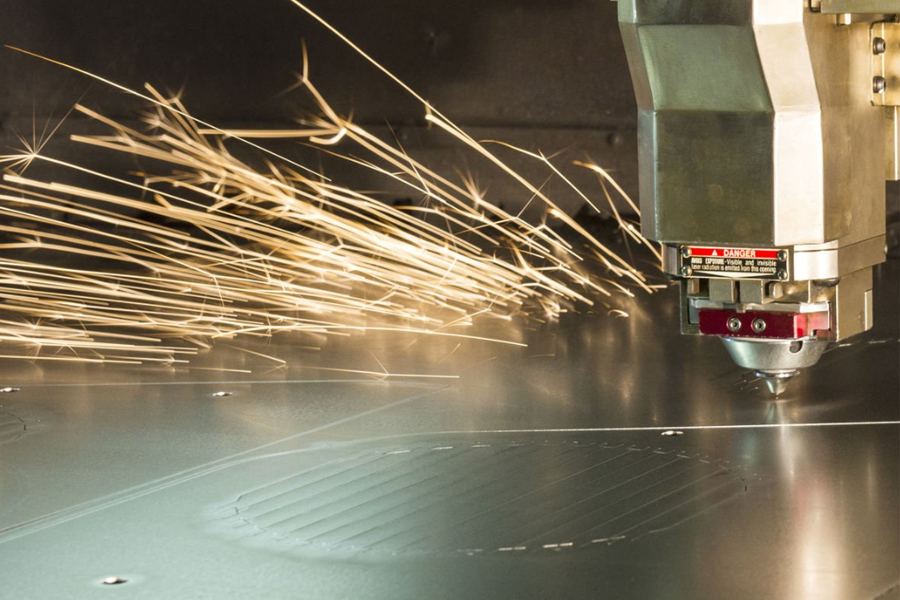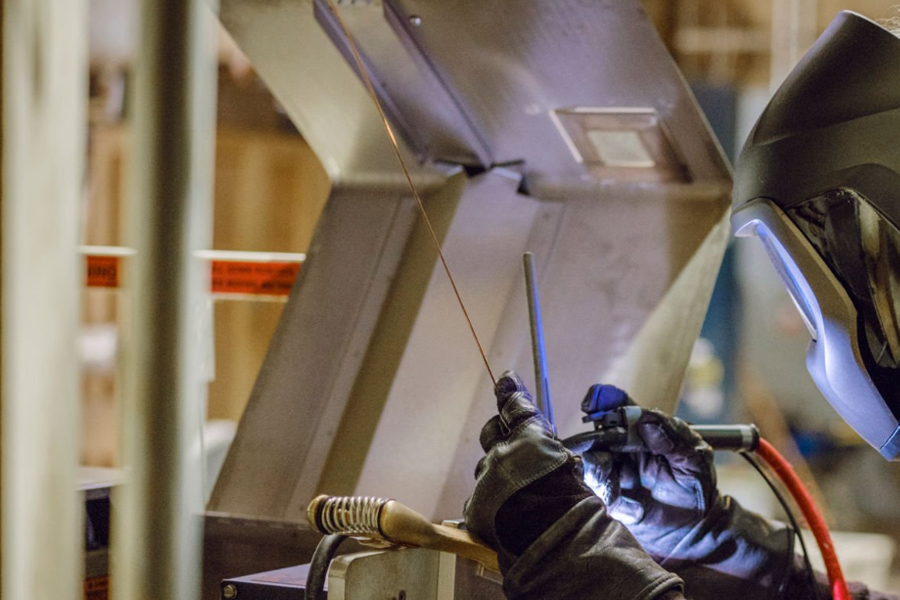
Sheet metal chassis processing: Industrial inkjet printer chassis generation process
Release time:2025-02-17 Click:69In industrial production, industrial inkjet printers play an important role, and its "protective shell" - sheet metal chassis, its processing process also contains many technical points. The following is a detailed introduction to the production process of industrial inkjet printer chassis.
Raw material selection and pretreatment
First of all, the raw materials should be selected. Usually, high-quality metal sheets are selected, which is the basis of sheet metal processing and is crucial for sheet metal chassis processing. After selecting the appropriate sheet, it needs to be pretreated to remove surface oil, impurities, etc. to ensure the smooth progress of subsequent processing.

Laser sheet metal processing blanking
Blanking is the first step in processing, and laser sheet metal processing has significant advantages in this link. Through high-energy laser beams, the sheet metal can be accurately cut into the required shape and size according to the pre-designed drawings. Laser cutting has extremely high precision, smooth and flat cuts, and reduces the subsequent grinding process. For example, when cutting the side panels, door panels and other parts of the industrial inkjet printer chassis, laser sheet metal processing can complete the task quickly and accurately, laying a good foundation for the production of the entire chassis.
Bending and forming
The cut plates need to be bent and formed into the three-dimensional shape required by the chassis. This step requires the use of professional bending equipment to accurately control the angle and size of the bending according to the design requirements. In the processing of sheet metal chassis, the bending process directly affects the overall structure and appearance of the chassis. With rich experience and superb technology, the workers and masters turn pieces of flat plates into chassis parts with specific shapes to ensure that the various parts can fit perfectly.
Welding and assembly
The parts after bending are welded and assembled, which is a key step to connect the various parts into a complete chassis. Use appropriate welding processes, such as argon arc welding, to ensure the firmness and sealing of the welding. During the welding process, the welding parameters must be strictly controlled to avoid problems such as cold welding and leaking welding. After the welding is completed, a preliminary prototype of the industrial inkjet printer chassis is presented.

Surface treatment
In order to improve the aesthetics, corrosion resistance and wear resistance of the chassis, surface treatment is also required. Common surface treatment methods include painting and galvanizing. Spray painting can provide a variety of color options for the chassis to meet the personalized needs of different customers, while also playing an anti-corrosion role. Galvanizing can enhance the chassis's anti-rust ability and extend its service life.
Quality inspection and debugging
At the end of the entire sheet metal chassis processing process, strict quality inspection must be carried out. Check whether the chassis's dimensional accuracy, appearance quality, welding strength, etc. meet the standards. Only chassis that pass the quality inspection can enter the next link - installing the internal components of the inkjet printer and debugging to ensure that the industrial inkjet printer can operate normally.
From raw materials to the final industrial inkjet printer chassis, every link is closely connected, and sheet metal processing, laser sheet metal processing and other technologies are used throughout. It is these rigorous processing processes and exquisite craftsmanship that have produced high-quality chassis that can provide reliable protection for industrial inkjet printers.